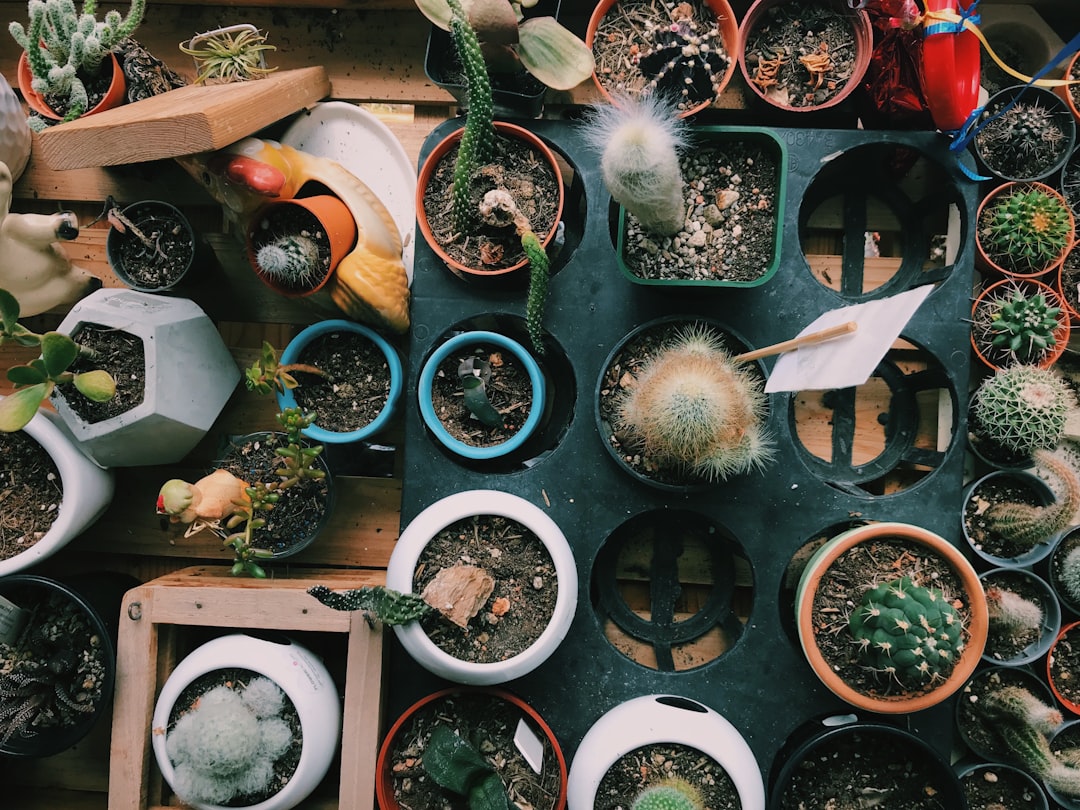Succulents and cacti are loved for their low-maintenance nature, but there’s one common mistake that even experienced plant owners make: overwatering. Unlike typical houseplants, succulents and cacti store water in their leaves, stems, and roots, meaning they require a completely different watering approach.
If you’ve ever wondered why your succulent’s leaves turn mushy or why your cactus suddenly collapses, overwatering is likely the culprit. In this guide, we’ll cover how to water succulents and cacti properly, the "soak and dry" method, and how to recognize signs of overwatering before it’s too late.
Why Overwatering is the #1 Killer of Succulents and Cacti
🌵 Succulents and cacti are drought-resistant plants – In their natural habitats (deserts and arid regions), rain is rare, and water evaporates quickly from the soil. These plants have adapted to store water, meaning they can survive weeks—sometimes months—without being watered.
🌵 Too much water suffocates roots – Unlike moisture-loving plants, succulents and cacti need oxygen around their roots. When soil stays wet for too long, it deprives the roots of oxygen, leading to root rot—a condition that is often fatal.
🌵 The biggest myth: "Water on a schedule" – Many plant owners follow a strict watering schedule, but succulents and cacti don’t work that way! Their watering needs depend on factors like season, temperature, humidity, and soil dryness.
The Best Way to Water Succulents and Cacti: The "Soak and Dry" Method
The best watering technique for succulents and cacti is called the "soak and dry" method. This method mimics the natural desert environment, where plants receive a deep but infrequent watering.
How to Use the "Soak and Dry" Method:
✅ Step 1: Check the soil – Water only when the soil is completely dry. Stick your finger 1-2 inches into the soil or use a moisture meter. If the soil feels damp, wait before watering.
✅ Step 2: Water deeply – Instead of giving small sips of water, pour water generously until it drains out of the bottom of the pot. This ensures the roots receive moisture while preventing stagnation.
✅ Step 3: Let the soil dry completely – After watering, do not water again until the soil is bone dry. This could take anywhere from one to three weeks, depending on temperature and humidity.
✅ Step 4: Adjust based on the season –
-
Spring & Summer (Active Growth Season): Water when soil is dry (every 1-2 weeks).
-
Fall & Winter (Dormant Season): Water less frequently (every 3-4 weeks or less).
Tip: If you’re unsure, it’s better to underwater than overwater. Your plant can recover from thirst, but root rot is often fatal.
Signs of Overwatering (and How to Fix It)
🔴 Soft, Mushy Leaves – Overwatered succulents develop translucent, swollen, or mushy leaves that eventually fall off.
🔴 Yellowing Leaves – If the lower leaves start turning yellow and soft, excess moisture is likely the cause.
🔴 Blackened or Mushy Stems – This is a sign of root rot, which can quickly spread and kill your plant.
🔴 A Sudden, Collapsing Plant – Cacti may look fine on the outside but can suddenly collapse if rot has spread internally.
How to Save an Overwatered Succulent or Cactus:
1️⃣ Remove the plant from wet soil immediately. If the roots are mushy or black, trim off the affected parts with sterilized scissors.
2️⃣ Let the plant dry out for a few days. Place it in a dry, well-ventilated area before repotting.
3️⃣ Repot in dry, well-draining soil. Use a cactus/succulent mix with added sand or perlite for better drainage.
4️⃣ Hold off on watering for at least a week. Allow the plant to recover before resuming the soak-and-dry method.
Common Watering Mistakes to Avoid
🚫 Using the wrong soil – Regular potting soil holds too much moisture. Always use a well-draining succulent and cactus mix.
🚫 Planting in pots without drainage holes – Water has nowhere to escape, leading to stagnant moisture. If using a decorative pot, place a nursery pot inside for proper drainage.
🚫 Misting instead of watering – Succulents and cacti aren’t tropical plants—misting can encourage rot and fungus. Always water the soil, not the leaves.
🚫 Watering too frequently – Just because the surface is dry doesn’t mean the whole pot is! Always check the deeper soil before watering again.
Final Thoughts
Watering succulents and cacti correctly is an art—and less is always more! By following the soak and dry method, using well-draining soil, and avoiding common mistakes, your plants will thrive and stay healthy for years.
Have you ever overwatered a succulent or cactus? What’s your best watering tip? Share in the comments!

Comments
No comments yet. Be the first to comment!
You must be logged in to comment. Login